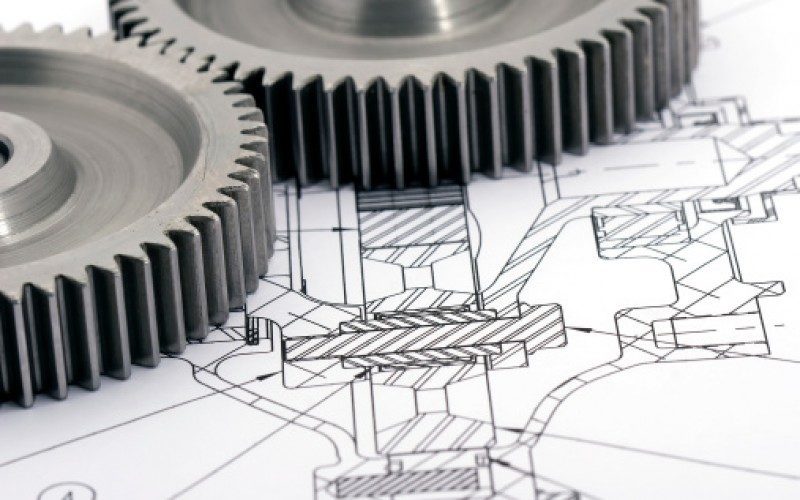Two New AGMA Publications
AGMA is happy to announce the publication of two new documents: AGMA 925-B22, Effect of Tribology and Lubrication on Gear Surface Distress, written by a subcommittee of the AGMA Helical Gear Rating Committee, and, AGMA 943-A22, Tolerances for Spur and Helical Racks, written by the AGMA Gear Accuracy Committee.
AGMA 925-B22
AGMA 925-B22 will be a valuable addition to the library of gear and lubricant engineers worldwide. When evaluating a gear design, a logical procedure would be to first calculate macropitting and strength capacity according to AGMA 2101 (or an appropriate application standard), then to use AGMA 925-B22 to determine the risk of surface distress due to lubrication and tribology. AGMA 925-B22 specifically considers the following four surface distress failure types, scuffing, macropitting (using lubrication regimes), micropitting, and wear.
AGMA 925 began as an Annex in the 1995 edition of ANSI/AGMA 2101. In 2003, it was made into a stand-alone document. Work on the now published “B” version began in 2015. The new edition has 106 pages, greatly expanding on the previous edition’s 51 pages. It provides more information on surface roughness and gear mesh lubrication. The calculations for gear mesh temperature have been pulled out of the scuffing calculations and placed into a new Clause 8 to assist with surface distress calculations for micropitting and scuffing. The central film thickness has been updated to include a thermal reduction factor as originally proposed by Gupta. Thermal Properties of Steels, given in Annex L, have been expanded using data from the ASM Handbook, Volume 1: Properties and Selection: Irons, Steels, and High-Performance Alloys, 10th Edition. The discussion of micropitting in 11.2 now includes a description and parameters for risk evaluation. Additional changes include clarifying diagrams and corrections from requests for interpretation that have been submitted to the AGMA Helical Gear Rating Committee.
AGMA 943-A22
AGMA 943-A22 is the first AGMA publication to cover spur and helical rack tolerancing since the withdrawal of AGMA 390.03a in 1999, which is when the discussions to create this new document began, but the bulk of the work in writing was completed in the last few years. Racks are a commonly manufactured component by companies big and small. The goal of this document is to give those manufacturers — and all other stakeholders in the industry, such as designers, inspectors, and end-users — a common language to describe the quality of racks.
AGMA 943-A22 differs from AGMA 390.03a in that it uses equations to specify tolerances classes instead of tolerance tables. Also, in AGMA 943-A22, lower AGMA tolerance classes designate higher precision to be consistent with international standards. To avoid confusion, the designator “V” is used when specifying tolerance classes from this document for elemental measurements, and the designator “R” is used when specifying tolerance classes from this document for double flank radial composite measurements. Twelve flank tolerance classes are defined, numbered V3 to V14, in order of increasing tolerance. For composite measurements, twenty tolerance classes are provided, numbered R31 through R50 in order of increasing tolerance.
On behalf of the gearing industry, AGMA would like to extend a sincere appreciation for the participation and the valuable contributions of the following experts. In addition, AGMA would like to especially thank the companies of these experts whose foresight and generosity made their participation possible.
AGMA 925-B22 — AGMA Helical Gear Rating Committee Subcommittee
- Robin Olson of Regal Rexnord Corporation, Subcommittee Chairperson
- John B. Amendola III of Artec Machine Systems
- Michael Blumenfeld of ExxonMobil
- Dick Calvert of Chalmers & Kubeck
- Angeline Cardis of Cardis Consulting
- Robert Errichello of GEARTECH
- William Hankes of A-C Equipment Services
- Amir Kadiric of Imperial College London
- Vanyo Kirov of Caterpillar Global Mining
- Timothy Krantz of NASA
- Mark Michaud of REM Surface Engineering
- Andrew Milburn of Milburn Engineering
- Chris Mileti of The Lubrizol Corporation
- Ernie Reiter of Web Gear Services
- Frank Uherek of Regal Rexnord Corporation
- Jeremy Wagner of John Deere
AGMA 943-A22 — AGMA Gear Accuracy Committee
- Steven Lindley of Regal Rexnord Corporation, Committee Chairperson
- John Rinaldo of Atlas Copco (Retired)
- Nicholas Mazur of Innovative Rack & Gear Company
- Terry Miller of Overton Chicago Gear
- Ernie Reiter of Web Gear Services
- Frank Uherek of Regal Rexnord Corporation
- Christopher Wanasek of Caterpillar Global Mining
- Weiguang Wang of Great Lakes Industry
- Timothy Woodruff of Jet Avion Corporation







